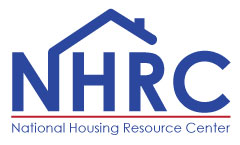Share of U.S. Households without a Bank Account Continues to Drop
Unbanked Rate Declines to 6.5 Percent in 2017
For the third consecutive survey period, the number of U.S. households without a bank account fell, according to the results of the 2017 biennial National Survey of Unbanked and Underbanked Households released today by the Federal Deposit Insurance Corporation (FDIC).
“The good news is that our nation’s banking system is serving more American households than ever before. The bad news is that even as the overall number of people who are unbanked has declined, 8.4 million households continue to lack a banking relationship,” said FDIC Chairman Jelena McWilliams.
The percentage of U.S. households that were unbanked in 2017 the most recent year of the survey, was 6.5 percent, the lowest rate recorded since the FDIC began conducting the survey in 2009. It was down from 7.0 percent in 2015, and down significantly from a high of 8.2 percent in 2011. The unbanked numbers for 2017 equate to 14.1 million adults in 8.4 million households not having a checking or savings account.
The decline in the unbanked rate from 2015 to 2017 can be explained almost entirely by improvements in the socioeconomic circumstances of U.S. households.
The number of underbanked U.S. households was also down compared to 2015 levels. In 2017, 18.7 percent of U.S. households were considered underbanked, or approximately 48.9 million adults in 24.2 million households. For purposes of the survey, the term underbanked refers to households that had an account at an insured institution but also obtained financial products or services outside of the banking system.
Consistent with previous surveys, banking status in 2017 varied considerably across the U.S. population. For example, unbanked and underbanked rates were higher among lower-income households, less-educated households, younger households, black and Hispanic households, households headed by working-age individuals with a disability, and households with incomes that tend to vary from month to month.
Mobile banking continues to become an increasingly important way for consumers to access their accounts. In 2017, mobile banking was used by 40.4 percent of banked U.S. households to access their account, almost double the 23.2 percent four years earlier.
According to the survey results, 86.0 percent of banked households visited a bank branch in the past 12 months, and 35.4 percent visited ten or more times. This held true for households that used online or mobile banking as their primary means for accessing their accounts: 81.0 percent of banked households that used mobile banking as their primary method visited a branch in the past 12 months, and nearly one-quarter (23.0 percent) visited ten or more times.
Other key findings in the survey include:
• Nearly 13 percent of households (14.8 million households) demonstrated unmet demand for mainstream small-dollar credit, and a majority of these households (57.2 percent) reported staying current on bills in the prior year. The report notes that new underwriting technologies, such as those that rely on transactions in consumers’ checking accounts, could help expand credit availability for some of these households.
• One in five U.S. households (22.7 million households) did not use mainstream credit in the prior 12 months and, consequently, may lack a credit score. Black and Hispanic households at every income level evaluated in the survey were more likely to be in this condition than white households. The report notes that helping these households establish and build a credit history can make it easier for them to access credit on reasonable terms when a need arises.
• Along with 86 percent of banked households, almost one in six unbanked households visited a bank branch in the past year. The report notes that these visits may represent key opportunities to inform unbanked households about products and services that can meet their needs.
• While unbanked rates have fallen in recent years, those that remain unbanked have proven more and more likely to respond that they are “not very likely” or “not at all likely” to open a bank account in the next year (75.0 percent in 2017 versus 62.1 percent in 2013). This fact, along with evidence that certain population segments remain much more likely to be unbanked, suggests that strategies targeted at addressing barriers to bank account ownership for specific groups may help further reduce unbanked rates.
• The share of households reporting that they turned to nonbank firms in the last year for the provision of credit and transaction services tracked in the survey dropped to 22.1 percent, down from 24.0 percent in 2015 and 24.9 percent in 2013. The drop was evidenced in both the use of credit and transaction services.
The FDIC survey began in 2009 and is conducted every other year in partnership with the U.S. Census Bureau. It provides detailed national, state, and local data to inform understanding of access to banking and to support economic inclusion efforts.
Go to economicinclusion.gov for additional survey findings, to generate custom tables, and to download information from all five surveys. Data also is available for metropolitan areas and states.
Survey Results
###
Congress created the Federal Deposit Insurance Corporation in 1933 to restore public confidence in the nation’s banking system. The FDIC insures deposits at the nation’s banks and savings associations, 5,542 as of June 30, 2018. It promotes the safety and soundness of these institutions by identifying, monitoring and addressing risks to which they are exposed. The FDIC receives no federal tax dollars—insured financial institutions fund its operations.
FDIC press releases and other information are available on the Internet at www.fdic.gov, by subscription electronically (go to www.fdic.gov/about/subscriptions/index.html) and may also be obtained through the FDIC’s Public Information Center (877-275-3342 or 703-562-2200). PR-77-2018
Last modified: October 31, 2018












